Crow Fair Powwow: Hospitality and Culture
photography by David Metcalf
Crow Fair Website: www.crazycrow.com
Crow Fair Date: August 16-21, 2017
Location: The Crow Agency is located 60 miles from Billings Montana, on the banks of the Little Bighorn River, near the place where the famous Battle of the Greasy Grass (commonly known as Custer’s Last Stand) was fought.
Accommodation: Hardin, Montana. You will find a selection of hotels including bed and breakfast options.
Crow Fair Teepee Accommodation: Rose (Olivia) Williamson
Email: [email protected]
Phone: (406) 426-0216
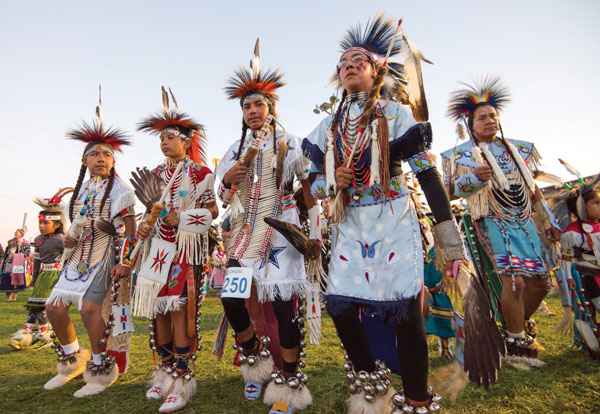
Looking down from a rise on the outskirts of the Crow Agency, I stood in awe of the 1,500 teepees stretched out below a wide blue Montana sky. Troupes of dancers gathered in tight circles making last minute adjustments to their ornate feathers, colorful tassels, and war bonnets. A line of white rodeo hats snaked its way through the crowd heading for the cowboy arena. The annual powwow was about to kick off. As saddles were strapped down and bridles adjusted, the wind blowing in from Little Big Horn, only two miles away, seemed to carry a sense of history and nostalgia with it. Every August the Crow Fair bursts into life, with over 50,000 participants and spectators descending on the Crow Agency, the tribal headquarters of the Crow in southern Montana. Native American tribes of the Great Plains and beyond gather to celebrate their culture through traditional dance, sport, horse racing, art and a rodeo at this spectacular annual event, which is one of the biggest powwows in the United States and dates back to 1904.
Luckily I managed to secure accommodation in a teepee, always a dream of mine. This was through Rose, a Crow Indian and former official tour guide for the Indian battlefield site of Little Big Horn. She had placed a small cardboard sign on the side of the road stating “teepee for rent” and set up a row of 10 teepees on her family plot. Each was outfitted with new sheets, little camp beds, blankets, a table, a lantern, and a colorful woven Indian rug, which served as the doorway flap.
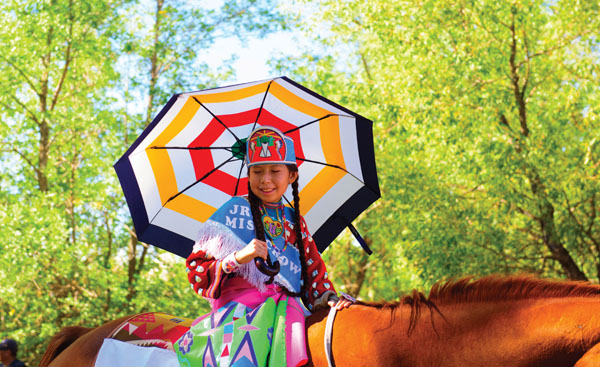
Rose’s family took care of the camp all day, with family members taking shifts. Because teepees don’t have keys, this provided important security. I stayed with Rose and her family for the five days of the fair and felt right at home. I thoroughly enjoyed getting to know the members of her extended family, including Grandma and her string of grandchildren, who filtered in and out all day.
While an aunty was busy beading, an uncle would be cooking, and coffee was always on the stove, piping hot. We readily struck up conversations, which always had a natural flow. In no time, I felt like one of the family.
For me, the Parade of Horses was one of the highlights of the powwow. A continuous line of colorful riders and horses with bright beadwork, ornamental war bonnets and other tribal regalia streamed through the showground route ending in the main pavilion. Afterwards, there was a singing competition, my first opportunity to hear different Native American Indian languages. While explanations of the songs were announced by the MC in English, my neighbor gave me a nudge and commented, “The prize money for the best singer is quite sizeable. You will hear some of the best singers in the nation today,” and indeed I did.
The powwow also featured rodeo events, different dance competitions, daily drumming circles, and a variety of other activities. On the final day a sacred ritual procession of dancers took place. There were four stops along the route, each involving a dance and a prayer. At each station, the crowd became quiet, and the atmosphere became reflective and spiritual. At the end of the procession, the dancers passed around a peace pipe.
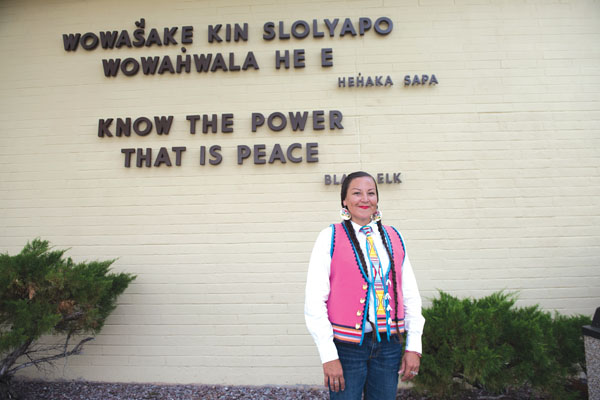
“This final day is only for Crow dancers,” said the woman standing next to me. “This sacred procession and dance marks the end of the Crow Fair. Only after it’s performed can families and clans dismantle their teepees and leave the grounds.”
The feeling I came away with after the powwow was one of deep respect for the Native American First Nations People. I saw a real pride among the young people, especially as they sang songs in their native language with tremendous passion. I saw the same deep commitment and respect expressed in the graceful movements of the dancers as they told stories of their ancestors.
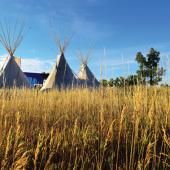
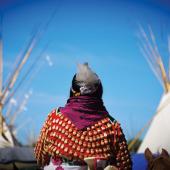
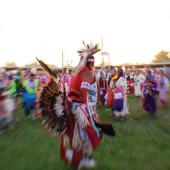

Equally as captivating were the beautiful regalia, all hand-made with elaborate feathers and jangling bells, and hand-woven shawls and cloth with a wide variety of symbolic patterns. Taking the opportunity to ask questions of my new Crow neighbors and friends about the meaning of the dances, other rituals and symbols allowed me a rare glimpse into their world and helped me to appreciate what a unique event the Crow Fair really is. I will be back again this August, and hope to see you there.
* * * *
David Metcalf is a photographer, writer, and photo gallery owner and is leading a group tour this year to the Crow Fair.
www.davidmetcalfphotography.com

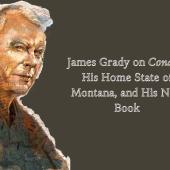
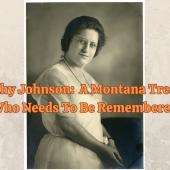


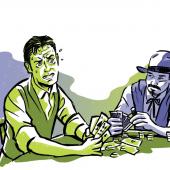
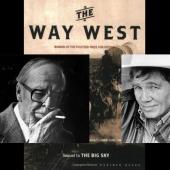





Leave a Comment Here